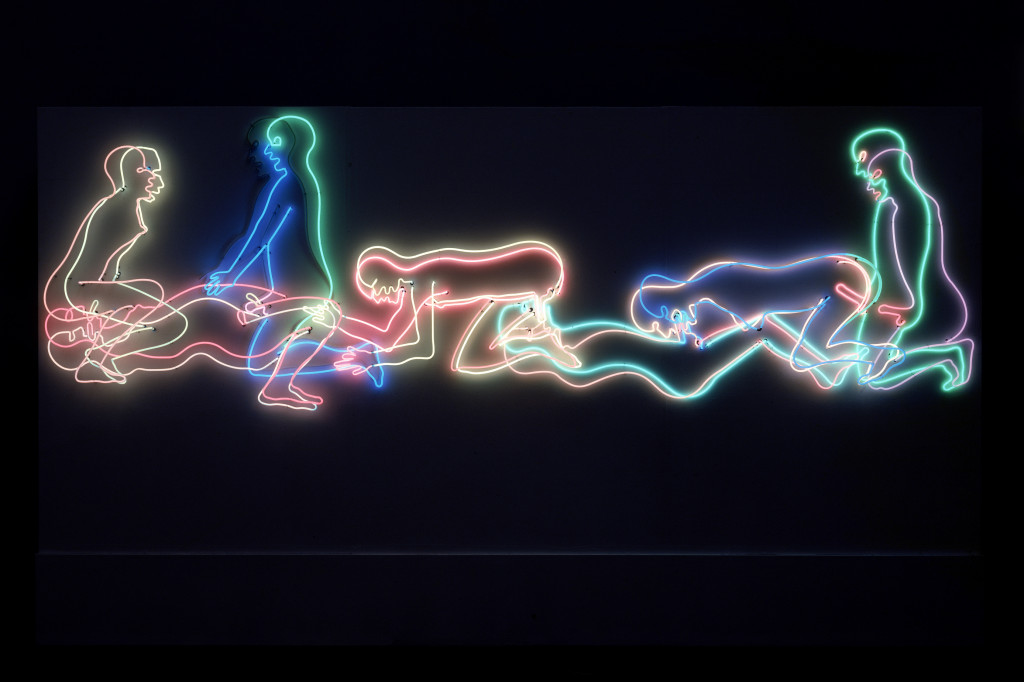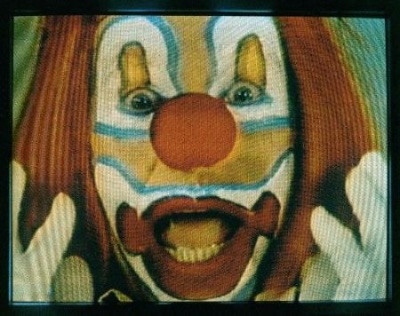Bruce Nauman
News — May 31, 2021
The Stedelijk Museum presents a comprehensive overview of the American artist Bruce Nauman. For over fifty years, Nauman has continually tested and reinvented what an artwork can be. His use of an eclectic range of media and unbridled urge to experiment makes him a key figure within art today. Nauman is an important source of inspiration and a benchmark for younger generations of artists. His interest in ambiguity and shades of meaning relates to everyday human experience, where certainty is not always guaranteed. The exhibition reflects Nauman’s preoccupation with themes such as the body, language, control, and the artist’s studio. His artworks are disruptive, penetrating, absurd, and playful, and often a physical as well as mental experience.
Rein Wolfs, director of the Stedelijk Museum: “Nauman’s work gets under your skin. It cries out for concentration and reflection. Deeper layers of meaning reveal themselves, almost unconsciously. Something that is at odds with today’s craving for fast-paced action and instant gratification. Nauman’s oeuvre offers a fascinating and disruptive experience: raw, confrontational, sometimes a slap in the face. His work touches on the deepest of human emotions: isolation, frustration, alienation, unease, restlessness, and boredom. Bruce Nauman is preoccupied with life’s existential dichotomies, the essence of our existence and what it is to be an artist."


EXPANDING BOUNDARIES
Since the 1960s, Bruce Nauman (1941, Fort Wayne, Indiana, United States) has been reshaping the boundaries of art. For Nauman, everything starts with an idea, which can take shape in many ways—as a sculpture, text, sound, neon light, or filmed action or interaction. In the late 1960s, when neon lighting was exclusively used in advertising signage, Nauman embraced this visually appealing, entrancing medium in his art. He often plays with the formal and psychological nature of language, with works that contain puns, anagrams, or palindromes, such as Eat/Death (1972).
Nauman also frequently uses his own body, elevating the most commonplace actions to art, like in the video installation Washing Hands Abnormal (1996).
Driven by the question of what it means to be an artist, he physically explores the boundaries of his studio in several video works, to conclude that everything he does in that space must be art: "(If) I was an artist and I was in the studio, then whatever I was doing in the studio must be art."
CONFRONTING
Nauman engages with major themes in his work that affect many: life, death, sex, love, violence, frustration, and helplessness. His commentary on the human condition is at the very heart of his oeuvre and leads to confrontational images and messages. For example, the monumental neon work One Hundred Live and Die (1984) consists of ultra-short one-liners that flicker on and off, one by one, which can be read as an ever-changing series of declarations about life and death. Death also permeates the sinister Carousel (1988), in which a steel merry-go-round from which gray animal carcasses are suspended jerkily rotates. The colorful neon work Seven Figures (1985), on the other hand, looks cheerful, and yet the figures performing sexual acts in an endless repetition move so mechanically and monotonously, stripped of any erotic tension, that the effect is both hilarious and discomfiting.


ABSURD AND DISRUPTIVE
Bruce Nauman’s work is disruptive—he plays with expectations and perceptions. Many of his works invite interaction. Visitors can enter the labyrinthine Double Steel Cage (1974), and are obliged to keep moving in order to catch a fleeting image of themselves in Going Around the Corner Piece with Live and Taped Monitors (1970). Movement is also essential to read the text of The True Artists Helps the World by Revealing Mystic Truths (1967). Which raises the question, does Nauman actually mean this statement to be taken seriously, and do we agree?
At times, Nauman’s work is also tragicomic and absurd, like Clown Torture (1987), one of his earliest and best-known video installations. A clown performs a series of repetitious actions in a variety of situations that always end in failure; the work gradually transforms slapstick humor into horror. Black Marble Under Yellow Light (1981–1988) is physically disorienting and challenges visitors’ perceptions. Are the marble blocks and floor in this space level or not?
One of the central themes in Nauman’s oeuvre is repetition, which appears in his work as endless movements, loops, and rotation. The artist also often returns to his earlier works in new artworks. Walks In Walks Out (2015), the exhibition’s most recent piece, references his studio walks of the 1960s.
BRUCE NAUMAN AND THE STEDELIJK
Both museums and private collectors in the Netherlands purchased work by Bruce Nauman early in his career. As a young artist, he participated in the groundbreaking group exhibition Op losse schroeven (1969) at the Stedelijk, on which occasion the museum acquired the neon work My Name as Though It Were Written on the Surface of the Moon. The Stedelijk continued to collect his work; in the mid-1990s, Rudi Fuchs added a number of important pieces to the collection, such as Seven Figures, Setting a Good Corner and Washing Hands Abnormal.
ABOUT THE EXHIBITION
Following previous exhibitions, which focused on specific parts of his oeuvre, this is the largest overview of Bruce Nauman’s work in the Netherlands to date. The exhibition consists of more than forty works, including several large, room-filling (video) installations. The selection includes works that have rarely been shown and traces the central themes that characterize Nauman’s oeuvre. The emphasis is on works that propelled his creative focus in a new direction and spatial works that invite the viewer to share in an immersive experience.
CATALOGUE
The survey is accompanied by a publication that includes introductory essays and a conversation between Bruce Nauman, Nicholas Serota, former director of Tate Modern, and Andrea Lissoni, former curator International Art (Film) Tate Modern, both of whom co-curated the exhibition. (Dutch/English, 176 pages, Tate Publishing, ISBN 978-90-500621-4-5).
ADDITIONAL PROGRAMMING
- From 13 June on, visitors can on Sundays attend a free, short introduction to the exhibition. In Dutch and English, reservations not necessary.
- Inspired by Nauman’s use of language, the museum, in collaboration with Poetry Circle Nowhere, organizes workshops in which participants experiment with language. Dates: 27 June and 29 August for above 18, 26 September for children from 8-12.
- For young people between the ages of 15 and 19, the Blikopeners—the Stedelijk’s peer educators—will organize a Summer School devoted to Bruce Nauman.
- Younger children who missed a lot of school this past year and do not speak Dutch at home can play with language in workshops given by the IMC Weekend School and deepen their language skills.
The Bruce Nauman survey is organized by Stedelijk Museum Amsterdam and Tate Modern, London, in collaboration with Pirelli Hangar Bicocca, Milan. Curated by Leontine Coelewij, curator of contemporary art Stedelijk Museum Amsterdam, Martijn van Nieuwenhuyzen, former curator of contemporary art Stedelijk Museum Amsterdam, Andrea Lissoni, former Senior Curator International Art (Film) Tate Modern, Nicholas Serota, former director Tate Modern, and Katy Wan, assistant curator at Tate Modern.
The exhibition is made possible in part thanks to the generous support of the Terra Foundation for American Art, Fonds21, Blockbuster Fund, Turing Foundation, Stichting Zabawas, Fundación Almine y Bernard Ruiz-Picasso para el Arte, and patrons of the Stedelijk Museum Fund.












